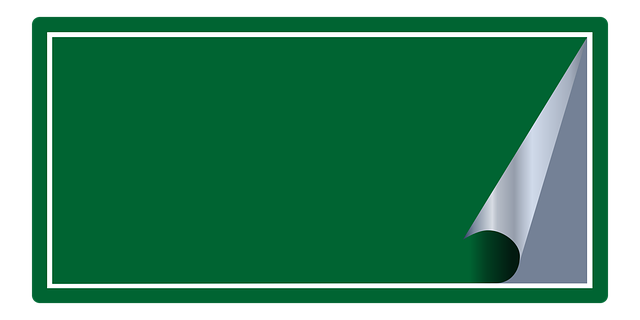In London, skin tag removal is a specialized service available for individuals, particularly focusing on sensitive areas like the face, armpits, groin, and under breasts. The city's clinics provide advanced treatments such as cryotherapy, electrosurgery, and laser treatment, chosen based on individual needs and tag characteristics. These treatments are performed by expert dermatologists using precise techniques to minimize risks of infection and scarring. For those interested in non-invasive options, home remedies like tea tree oil or apple cider vinegar can be considered, but professional removal is recommended for effective results and safety. The post-removal care is critical for healing without complications, and patients must follow strict aftercare instructions to ensure the best outcome. Tag Removal London clinics are equipped to deliver high-quality care, with a focus on patient comfort and personalized treatment plans, making them a trusted choice for residents seeking safe and efficient skin tag removal services.
When encountering skin tags, particularly on sensitive areas of the body, understanding the removal options and post-treatment care is paramount. This article serves as a guide for residents in London seeking professional treatment or safe home remedies tailored to delicate skin. Explore the nuances of skin tag removal, from the latest medical procedures to gentle at-home solutions, ensuring optimal healing and comfort. With a focus on Tag Removal London practices, readers will navigate the process with confidence, whether it’s for visible tags or those in more private regions.
- Understanding Skin Tags: Identification and Concerns for Sensitive Areas
- Professional Treatment Options for Skin Tags in London: A Comprehensive Guide
- Home Remedies for Skin Tag Management on Delicate Body Parts
- The Role of Topical Agents in Skin Tag Removal for Sensitive Skin Types
- Post-Removal Care and Considerations for Healing in Private Regions
Understanding Skin Tags: Identification and Concerns for Sensitive Areas

Skin tags, also known as acrochordons, are benign skin growths that can appear anywhere on the body, including sensitive areas. These soft, hanging pieces of flesh are typically harmless and may vary in size and color. Identification of skin tags is generally straightforward, with their characteristic stalk-like structure attached to the skin being a giveaway. However, when they occur in sensitive regions such as the face, armpits, groin, or under the breasts, additional considerations come into play due to the high concentration of sensory receptors and the potential for discomfort or embarrassment. In London, where aesthetics and personal care are paramount, individuals often seek tag removal services. The procedure for removing skin tags in sensitive areas requires a delicate approach, as the skin is thinner and more susceptible to complications like infection or scarring. It’s crucial to consult with healthcare professionals who specialize in dermatological procedures, ensuring the highest standard of care. In London, reputable clinics offer state-of-the-art tag removal treatments tailored to address the unique needs of these areas, providing patients with both effective and sensitive care.
Professional Treatment Options for Skin Tags in London: A Comprehensive Guide

In London, individuals seeking the removal of skin tags from sensitive areas have access to a variety of professional treatment options tailored to ensure safety and efficacy. Dermatologists in the city are well-versed in the latest techniques for tag removal, ensuring that patients receive personalized care based on the size, location, and nature of their skin tags. Common treatments include cryotherapy, which involves freezing the tag with liquid nitrogen to induce a controlled freeze-thaw cycle leading to its eventual fall off; electrosurgery, which uses an electric current to remove the tag; and laser treatment, which is often preferred for sensitive areas due to its precision and minimal scarring. Each method has its own advantages and is chosen based on the individual’s specific condition. For instance, cryotherapy might be recommended for small, benign tags, while electrosurgery could be more suitable for larger or multiple skin tags. Laser treatment, particularly CO2 or Er:YAG lasers, is gentle yet effective for delicate areas such as the face or underarms. Patients in London benefit from these advanced treatments in state-of-the-art facilities where dermatologists employ a patient-centric approach to ensure optimal outcomes and the highest standards of care.
When considering tag removal in London, it’s crucial to consult with a qualified healthcare professional who can assess your skin tags and recommend the most appropriate treatment. This ensures that you receive the safest and most effective treatment for your specific situation. The decision may also be influenced by factors such as the presence of diabetes or other health conditions that could affect healing. Reputable clinics in London offer a consultation service to discuss all available options, including the latest in homeopathic and natural remedies for those preferring less invasive methods. With the wealth of expertise and high-quality care available in the city, patients can navigate their treatment journey with confidence, knowing they are in capable hands.
Home Remedies for Skin Tag Management on Delicate Body Parts

When managing skin tags in sensitive areas, individuals often seek gentle and effective home remedies before considering professional tag removal services like those offered in London. Natural treatments can be particularly appealing for areas such as the face or underarms where surgical intervention might lead to higher risks of infection or scarring. Tea tree oil, known for its antiseptic properties, can be applied directly to the skin tag after diluting it with a carrier oil. This application may soften and eventually slough off the tag over time. Another at-home method involves the use of apple cider vinegar, which is believed to work by gradually dissolving the skin tag due to its acetic acid content. For this remedy, soak a cotton ball in the vinegar and secure it over the tag with a bandage, replacing it daily until the tag falls off or diminishes in size. It’s important to approach these home remedies with caution; they can be less effective and may cause discomfort or irritation. Should the skin tag persist or if there’s an indication of infection, consulting a professional for tag removal in London is advisable. Dermatologists and clinics specializing in cosmetic procedures are well-equipped to handle the removal of skin tags on delicate areas with precision and care, ensuring the best possible outcome without compromising skin health.
The Role of Topical Agents in Skin Tag Removal for Sensitive Skin Types

When addressing skin tag removal, particularly in sensitive areas, the selection of appropriate topical agents is paramount. These agents are formulated to cater to the delicate nature of the skin, often found in areas like the face, underarms, or groin. In London, dermatological clinics specializing in tag removal have adapted treatments to suit these sensitive sites, ensuring minimal discomfort and optimal results. The active ingredients in topical agents such as salicylic acid, liquid nitrogen, or natural extracts work to soften and eventually slough off the skin tag, allowing it to detach naturally without the need for more invasive procedures. Patients seeking ‘Tag Removal London’ options can benefit from the expertise of professionals who understand the balance between effective treatment and gentle care, particularly when dealing with areas where the skin is thinner or prone to greater sensitivity. The application of these agents must be precise and under the guidance of a qualified practitioner to avoid potential complications, which underscores the importance of consulting with a reputable clinic for tag removal in London.
Post-Removal Care and Considerations for Healing in Private Regions

When undergoing skin tag removal, particularly in sensitive areas such as private regions, post-removal care is paramount for optimal healing and comfort. It’s crucial to adhere strictly to the healthcare provider’s instructions post-procedure. The area should be kept clean and dry to prevent infection. Gentle washing with a mild soap and patting dry with a soft towel are recommended. Avoiding tight clothing or anything that may chafe the treated skin can help minimize discomfort and reduce the risk of complications. For those who have undergone skin tag removal in London, Tag Removal London clinics often provide detailed aftercare guidelines tailored to each individual’s needs. These guidelines typically include avoiding strenuous activities or sexual intercourse for a specified period to ensure proper healing without impediment.
In the initial days post-removal, the treated skin may appear red or swollen, which is a normal part of the healing process. Itching and discomfort are also common, but resisting the urge to scratch or disturb the area is important as it can delay healing or cause scarring. If any signs of infection such as increased pain, reddening beyond the initial redness, pus, or a fever occur, prompt medical attention should be sought. Regular follow-up appointments with your provider are crucial to monitor the healing process and address any concerns. For residents of London seeking skin tag removal, Tag Removal London specialists offer expert care and guidance throughout the entire process, ensuring the best possible outcomes for sensitive area treatments.
When addressing skin tag concerns, particularly in sensitive areas, it is crucial to approach treatment with care. This article has navigated through the various aspects of skin tag removal, offering insights into professional treatment options available in London, home remedies suitable for delicate body parts, and the significance of topical agents tailored for sensitive skin types. For those considering tag removal in London, understanding the post-removal care and considerations for healing in private regions is paramount for optimal recovery. Prospective patients should consult with healthcare professionals to determine the safest and most effective treatment plan for their unique situation. With the right guidance and treatments, individuals can manage skin tags effectively while maintaining the integrity of their skin’s sensitivity.
